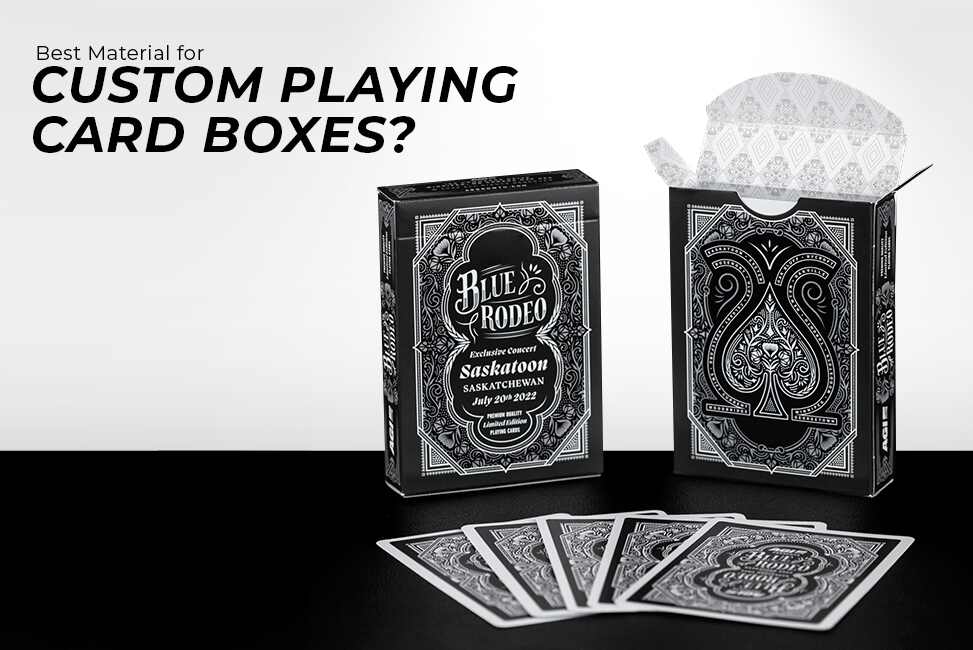Playing cards have long been a staple of gaming, entertainment, and even magic. From casual card games like Bridge and Poker to complex board games that use specialised decks, the shape and size of a playing card can have a big impact on both functionality as well as aesthetics. No matter if you’re a game designer, collector, printer, or card enthusiast, understanding what are the measurements of a playing card is paramount. In this comprehensive post, you will get an ultimate guide for standard and custom playing cards sizes. So, keep reading for more insights!
Why Do Playing Card Sizes Matter?
The size of a card deck goes far beyond visual appeal. The playing card size dimensions influence how comfortably it can be held, shuffled, and dealt during gameplay. Not only this, but they also determine storage sizes while affecting everything from packaging to sleeve capability. When it comes to a production standpoint, larger cards require more materials and incur higher costs for printing. Choosing the right playing card dimensions is considered to be a thoughtful balance between cost-efficiency, usability, visual appeal, and the overall game experience for the player.
A Glimpse Into Standard Playing Card Sizes
Here is a brief overview of the most famous standard playing card dimensions you need to know.
Poker Size Cards
Poker-sized cards are designed for classic games, such as Blackjack, Poker, and Texas Hold’em. Ideal dimensions for poker cards include a height of 3.5 inches, a width of 2.5 inches, and a ⅛ inch corner radius. Adding more to this, these cards come with an 11.5 pt thickness, 5:7 aspect ratio, and ⅛ bleed and safe zones to ensure a professional quality production of playing cards.
Bridge Size Cards
Bridge-sized cards are a standard option for custom decks. You might be wondering how big is a standard playing card like a bridge, right? These cards feature a slightly narrower width than poker cards. They typically measure 2.25 inches of width, 3.5 inches of height, an 11.5 pt thickness, ⅛ inch corner radius, 9:4 aspect ratio, and the bleed and safe zones are ⅛ inches.
Mini Playing Cards
Mini playing cards are compact versions of standard poker cards. They are famous for games like Go Fish, UNO Mini, Solitaire, and travel-friendly poker. The dimensions of a poker card like this are 1.75 inches in width, 2.5 inches in height, a ⅛ inch corner radius, 7:10 aspect ratio, 11-14 pt thickness, and standard bleed and safe zones. These are the ideal choice for gaming on the go.
Jumbo Playing Cards
In case you’re thinking what size are standard playing cards like Jumbo, you’ve come to the right place. Jumbo cards are oversized variants of poker cards and are available in two types one which is jumbo-index cards and the other are larger jumbo-sized cards. They have 2.5 inches of width, 3.5 inches of height, ⅛-¼ corner radius, 7:10 aspect ratio, and a thickness of 12-16 pts.
Exploring Custom Playing Card Sizes
Custom playing cards offer countless possibilities in terms of size, design, and shape. This is what makes them the perfect solution for marketers, game developers, teachers, and creative individuals. These specialized playing cards are tailored to match the unique version of your game or brand so that you can create a memorable and impactful experience. While you can choose any game card dimensions, the standard size remains 2.5 inches in width and 3.5 inches in height for compatibility. The recommended corner radius is ⅛ inch for smooth handling.
The overall thickness of these cards typically ranges from 12-14 pt. However, options to go thicker are possible depending on durability needs. If we talk about aspect ratio and both bleed and safe zones, they are also standard. All of these measurements can be customised based on your budget. From classic rectangles to innovative shapes, like hearts, diamonds, circles, or original silhouettes, custom playing cards provide a unique mix of function and personal touch.
Closing Statement
Whether you’re designing a traditional playing card deck or launching a new game from scratch on Kickstarter, selecting the right dimensions of playing card is an important decision. It impacts cost, usability, aesthetics, and the satisfaction level of a player. While standard playing card sizes offer ease of printing and accessibility, custom sizes can take the uniqueness of your product to another level. The above are the most famous standard playing cards and custom ones, along with their possible dimensions. What size to choose is the main point of concern. You need to make a thoughtful choice early in the design process. It will help not only save time and money but also lead to a much better user experience. How you create the card is up to you.

